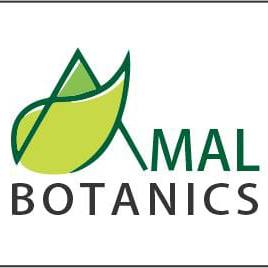
The History of Moringa: From Ancient Medicine to Modern Superfood
Share
The History of Moringa: From Ancient Medicine to Modern Superfood
Moringa, often called the “Miracle Tree,” has a fascinating history rooted in ancient cultures and traditions. From its use as a medicinal plant in ancient civilizations to its rise as a modern superfood, Moringa has stood the test of time. This article explores the journey of Moringa, highlighting its historical significance, cultural importance, and transformation into a global health phenomenon.
Origins of Moringa
Moringa’s story begins in the Indian subcontinent, where it has been cultivated for over 4,000 years. Known as Shigru in Sanskrit, the plant was highly regarded in Ayurvedic medicine for its ability to treat over 300 ailments. Its use quickly spread to ancient Egypt, where Moringa oil was prized for its moisturizing properties and used to protect the skin from harsh desert climates.
By 2000 BCE, Moringa reached ancient Greece and Rome, where it was valued not only as a food source but also as a medicinal remedy for digestive issues and fatigue. Its versatility and resilience made it a staple crop in many parts of the ancient world (Fahey, 2005).
Moringa in Traditional Medicine
Throughout history, Moringa has played a vital role in traditional healing systems across cultures.
- India: Featured prominently in Ayurvedic texts as a remedy for inflammation, digestive disorders, and skin conditions.
- Africa: Used in folk medicine to treat malnutrition and boost energy.
- Ancient Egypt: Moringa oil was applied as a beauty product and medicinal ointment.
- Greece and Rome: Consumed for its antioxidant properties and as a treatment for various ailments.
From Ancient Times to the Modern Era
The recognition of Moringa’s value continued into the 20th century, when researchers began to study its nutritional profile and potential health benefits. During World War II, Moringa leaf powder was used as a supplement to combat malnutrition among soldiers.
In the 21st century, Moringa has transitioned into the wellness spotlight, celebrated as a superfood. Its ability to grow in harsh climates has also made it an important crop in fighting food insecurity in developing regions (Kaur, et al, 2023).
Key Milestones in Moringa's History
To better understand Moringa’s journey, here’s a timeline of significant events:
- 2000 BCE: Cultivation begins in India and Egypt.
- 500 BCE: Greek and Roman texts document its medicinal uses.
- 18th Century: Introduced to the Caribbean and South America by British colonists.
- 1940s: Used as a nutritional supplement during World War II.
- 2000s: Recognized globally as a superfood in health and wellness industries.
Why Moringa Remains Relevant Today
Modern science has confirmed what ancient civilizations knew for centuries: Moringa is a powerhouse of nutrition and health benefits. Packed with vitamins, minerals, antioxidants, and essential amino acids, it supports immunity, energy levels, and overall well-being (Abdull Razis, 2014).
In addition to its health benefits, Moringa’s environmental impact is noteworthy. It thrives in arid climates, requires minimal resources, and serves as a sustainable food source for communities in need.
How to Add Moringa to Your Lifestyle
Incorporating Moringa into your daily routine is simple and effective. Here are some ideas:
- Moringa Powder: Sprinkle into smoothies, soups, or sauces for a nutritional boost.
- Moringa Tea: Brew a refreshing and antioxidant-rich beverage.
- Moringa Oil: Use as a salad dressing or a natural moisturizer for skin and hair.
Conclusion
Moringa’s journey from ancient medicine to modern superfood reflects its enduring importance across cultures and centuries. Its rich history, combined with proven nutritional benefits, makes it a timeless treasure in both traditional healing and contemporary wellness.
Call-To-Action
Discover the wonders of Moringa for yourself! Explore our premium range of Moringa products here and start your journey to better health today. Don’t forget to share this article with friends and family who might benefit from learning about this amazing plant.
